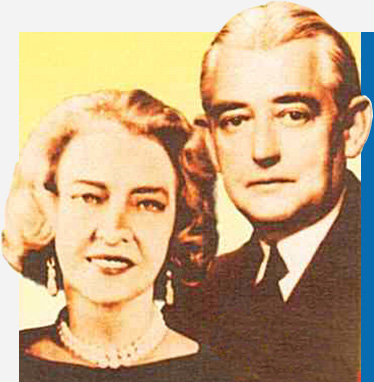About the Killams
 Izaak Walton Killam was born and raised in Yarmouth, Nova Scotia during the late 19th century. Killam was 16 when his father died and his mother and two sisters moved to Massachusetts. He went to work in the Yarmouth branch of the Union Bank of Halifax. At the age of 18, he was transferred to the head office in Halifax and one year later, in 1904, he began working for Max Aitken (later Lord Beaverbrook) of Royal Securities.
Izaak Walton Killam was born and raised in Yarmouth, Nova Scotia during the late 19th century. Killam was 16 when his father died and his mother and two sisters moved to Massachusetts. He went to work in the Yarmouth branch of the Union Bank of Halifax. At the age of 18, he was transferred to the head office in Halifax and one year later, in 1904, he began working for Max Aitken (later Lord Beaverbrook) of Royal Securities.
Killam became the President of Royal Securities in 1915 and bought Aitken out in 1919. This commenced an extraordinary career during which he amassed a fortune through investments and development of corporate enterprises, particularly in the utilities and pulp and paper industries. Killam developed a reputation in his own circle as a "builder" and a shrewd financier who believed in long-term development of his investments. He was highly respected and an honest man. He was extremely hard-working and drew great esteem and loyalty from his employees.
In 1922, Izaak Walton Killam married Dorothy Brooks Johnston, born in St Louis, Missouri in 1899, a woman of vibrant personality, charm, intelligence and determination. In contrast to Izaak's reserved nature, Dorothy loved to socialize and entertain. She became a valued confidante with whom he discussed many prospects and problems. The Killams had no children and their only nephew died in action with the US forces in the Pacific in 1944.
In 1955, Izaak Walton Killam died leaving his entire fortune to his wife. Dorothy Killam was very familiar with Izaak's wishes for the eventual use of his monies and, although long plagued herself by poor health, she used her own considerable abilities to double the original value of the inheritance in the next 10 years. When Dorothy Killam died in 1965, her Will effectively and clearly discharged the wishes of her late husband. It gave funds in trust to Dalhousie University (Izaak was a Maritimer),the Montreal Neurological Institute of McGill University (a relative's multiple sclerosis aroused his interest in the Institute, and one of its doctors became Dorothy Killam's physician), The University of British Columbia (Killam's corporation, Royal Securities,had a pulp and paper company in BC), the University of Alberta (Royal Securities owned Calgary Power), and the Canada Council for the Arts.
In 1966, our own University, in the single largest endowment ever to a postsecondary institution in Alberta, received $14 million, distributed in these particular categories: a Killam Chairs Fund "to establish at least two Chairs at the University of Alberta inthe scientific and/or engineering fields" ($2 million); a Killam Memorial Salary Fund"to pay salaries of its permanent teaching staff" ($4 million); an Izaak Walton Killam Memorial Fund for Advanced Studies "to provide fellowships … for advanced study or research … both in Canada and in other countries" ($3 million); and General Endowment Funds providing income to be used "for such purposes as may be determined by [the University's] governing body" ($5 million).
Subsequently, the Board of Governors at both the University of Alberta and the University of Calgary agreed that one-third of the "net corpus of the trusts" would go to the University of Calgary when it became an independent university in 1966.